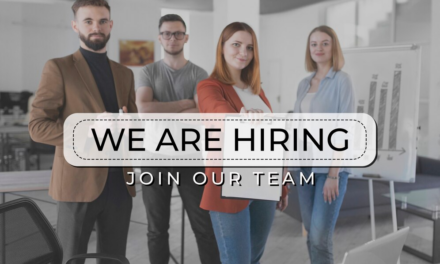
Revolutionizing Workforce Planning: 8 Insights for a Digital Tomorrow

The landscape of workforce planning is rapidly evolving, driven by technological advancements and shifting global demands. Organizations are recognizing that to remain competitive and adaptable, they must rethink traditional workforce strategies and embrace the future of digital transformation. As businesses navigate this transition, understanding the key insights shaping workforce planning for a digital tomorrow is essential. This blog post explores eight critical insights that will guide organizations in adapting to new workforce dynamics and emerging technologies.
Embrace Data-Driven Decision Making
Data is at the heart of digital transformation in workforce planning, serving as a powerful tool for enhancing efficiency and strategic decision-making. By leveraging analytics, companies gain deeper insights into employee performance, skills gaps, and overall organizational productivity. Predictive analytics enables businesses to anticipate workforce needs and make informed decisions on hiring, training, and succession planning.
With real-time data access, organizations can refine workforce strategies, ensuring agility in response to evolving market demands. Data-driven decision-making allows HR leaders to forecast trends, plan for future workforce requirements, and allocate resources effectively. Embracing a data-centric approach fosters innovation, improves employee retention, and enhances overall business performance in the digital age.
Prioritize Employee Experience and Engagement
Prioritizing employee experience and engagement is crucial for attracting and retaining top talent. Companies are recognizing that a satisfied and motivated workforce leads to higher productivity, lower turnover, and better business outcomes. As workforce trends continue to shift toward flexible work arrangements and personalized career development, organizations must leverage technology to enhance communication, collaboration, and employee well-being. Digital tools such as AI-driven feedback systems, learning platforms, and remote collaboration software create a more connected and engaged workforce. By fostering a positive work environment that supports professional growth and work-life balance, businesses can build a resilient, future-ready team that thrives in a rapidly evolving landscape.
Leverage Artificial Intelligence (AI) and Automation
Artificial Intelligence (AI) and automation are revolutionizing workforce planning by streamlining repetitive tasks, enhancing productivity, and enabling more strategic decision-making. From AI-driven recruitment tools that match candidates with job requirements to chatbots that answer employee inquiries, AI is transforming how businesses manage their workforce.
Automation allows HR departments to focus on more value-added activities, such as talent development and employee engagement, while also reducing the risk of human error. The integration of AI and automation into workforce planning also creates opportunities for organizations to be more proactive in managing workforce needs.
Support Remote and Hybrid Work Models
The rise of remote and hybrid work models is reshaping workforce planning. With more employees working from various locations, organizations must rethink how they manage collaboration, communication, and performance. Digital tools that support virtual teams, project management, and real-time communication have become essential.
To ensure productivity and maintain a cohesive company culture, businesses must invest in technology that facilitates remote work and aligns with the company’s values and goals. Workforce planning now includes designing flexible, remote-friendly strategies that allow employees to work from anywhere while maintaining efficiency and engagement.
Invest in Upskilling and Reskilling Programs
The demand for new skills is growing rapidly, requiring businesses to adapt or risk falling behind. To remain competitive, organizations must invest in continuous learning and development programs that equip employees with relevant skills. Upskilling and reskilling are no longer optional but essential as industries integrate AI, data analytics, and automation into daily operations.
Employees must be trained to work alongside these technologies and leverage them effectively. Organizations that prioritize skill development not only future-proof their workforce but also enhance employee satisfaction and engagement. A strong learning culture fosters innovation, improves productivity, and boosts retention rates, making it a key strategy for long-term business success in an ever-evolving market.
Adopt Flexible Workforce Models
The future of workforce planning demands a shift toward more flexible and adaptable talent management approaches. Traditional full-time, permanent positions are no longer the default as businesses explore alternative workforce models. The gig economy, freelance work, and project-based employment are expanding, enabling organizations to access a diverse talent pool with specialized expertise. This shift allows businesses to scale up or down efficiently in response to changing demands, reducing operational costs and increasing agility.
Digital workforce management tools provide real-time insights into talent availability and resource allocation, ensuring seamless collaboration across different employment types. By embracing flexible workforce models, companies can enhance productivity, foster innovation, and maintain a competitive edge in a dynamic business environment.
Foster Diversity and Inclusion Through Technology
Diversity and inclusion (D&I) are critical components of modern workforce planning. Organizations that prioritize diversity benefit from increased innovation, improved decision-making, and enhanced employee satisfaction. Digital tools can help businesses remove unconscious biases from hiring processes, ensuring that candidates are evaluated based on skills and experience rather than gender, race, or other irrelevant factors. AI-powered recruitment platforms, for example, can anonymize resumes and ensure that diverse talent is identified and hired.
Technology can facilitate more inclusive workplaces by providing employees with tools for collaboration and communication that are accessible to everyone, regardless of their background or ability.
Focus on Agility and Adaptability
Agility and adaptability are essential for long-term success. Companies must respond swiftly to market changes, emerging technologies, and shifting employee expectations to stay ahead of the competition. The ability to pivot quickly can make the difference between growth and stagnation. Digital solutions, including real-time data, predictive analytics, and scenario modeling, empower organizations to make informed decisions and refine workforce strategies proactively.
By fostering a culture that embraces change and implementing technology that supports rapid adjustments, businesses can navigate disruptions more effectively. An adaptable workforce ensures resilience, enhances innovation, and positions the organization for sustained success in an increasingly digital and dynamic world.

The future of workforce planning is undeniably digital, and organizations must evolve to meet the challenges and opportunities presented by emerging technologies and changing workforce dynamics. By embracing data-driven decision-making, prioritizing employee experience, leveraging AI and automation, supporting remote work, investing in upskilling, adopting flexible workforce models, fostering diversity and inclusion, and focusing on agility, businesses can revolutionize their workforce planning strategies. These eight insights provide a roadmap for organizations looking to build a workforce that is not only prepared for the digital tomorrow but is also empowered to thrive in it.
























